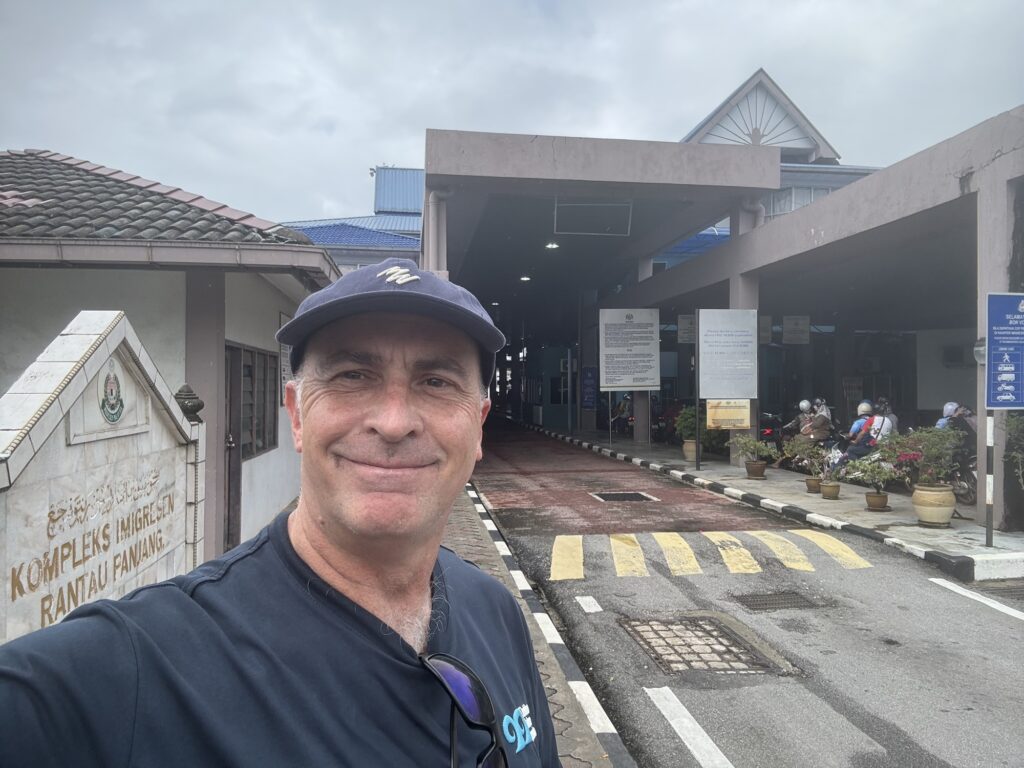
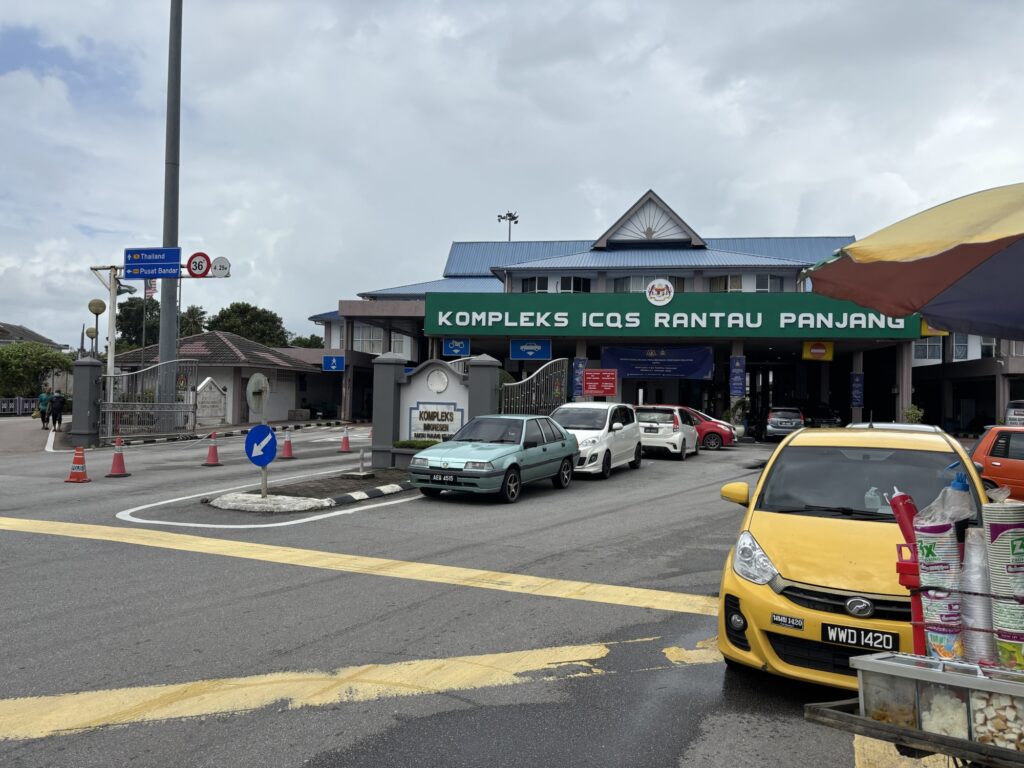
“Bpai nai krub?” The immigration officer asked robotically as I handed over my passport. (Where are you going?)
“Klap bahn krub,” I replied. “Bpai tee Krung Thep.” (I am going home, sir. To Bangkok.)
My accent, coupled with my Australian passport, caught his attention. He looked up at me, momentarily surprised. Clearly, I was an anomaly—utterly different from the usual processing of Thai and Malaysian passports or border passes. I was the only non-Thai or non-Malay in the immigration hall.
“Klap bahn, bpai tee Krung Thep?” he repeated, flipping through my passport.
“Yes,” I confirmed in Thai. “I have a residency visa.”
He stopped turning the pages and stared at the visa as if trying to process what he was seeing. Then, he made a call in Thai, which I couldn’t hear. Hanging up the phone, he switched awkwardly to English,, “Sorry, you must go interview room and see Supervisor.”
My heart sank. Was I in Trouble? I had officially left Malaysia, crossed the bridge from Rantau Panjang, Malaysia over the Golok River and was now standing on Thai soil—or rather, in a kind of no-man’s just outside the Thai city of Su-ngai kolok.
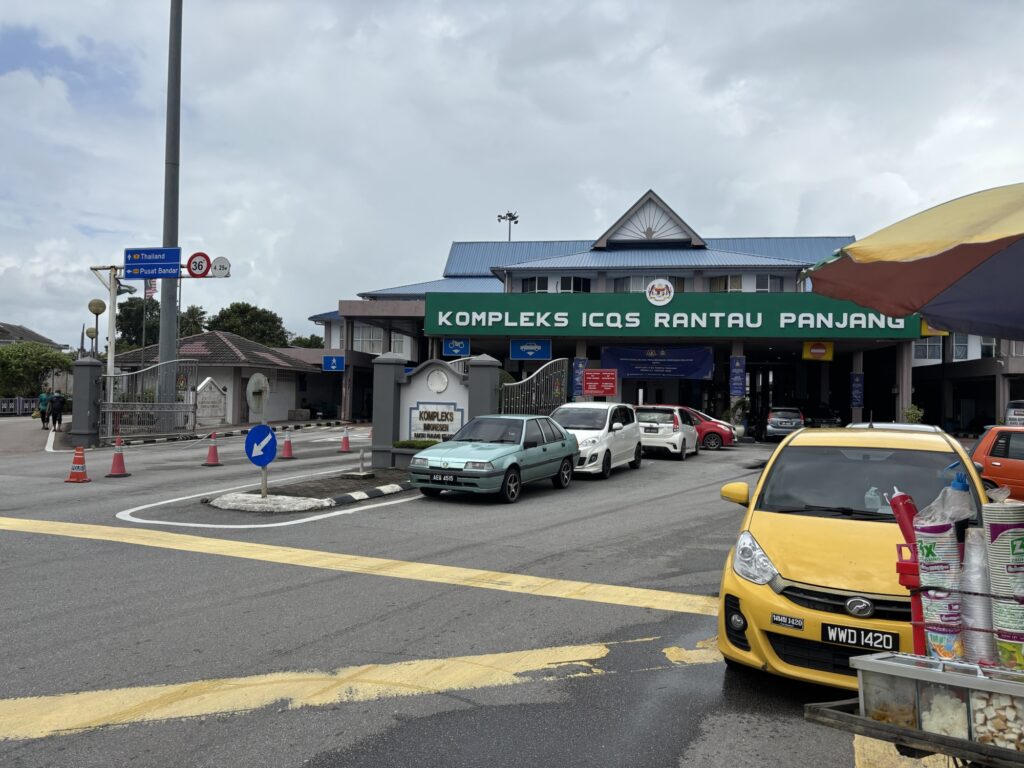
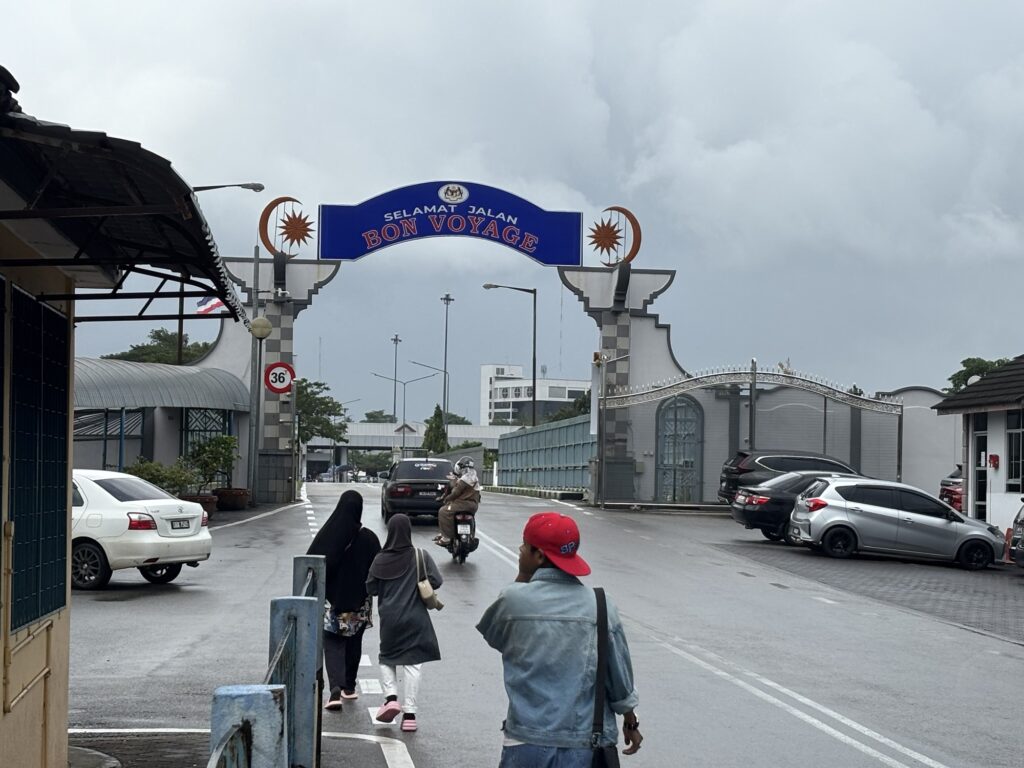
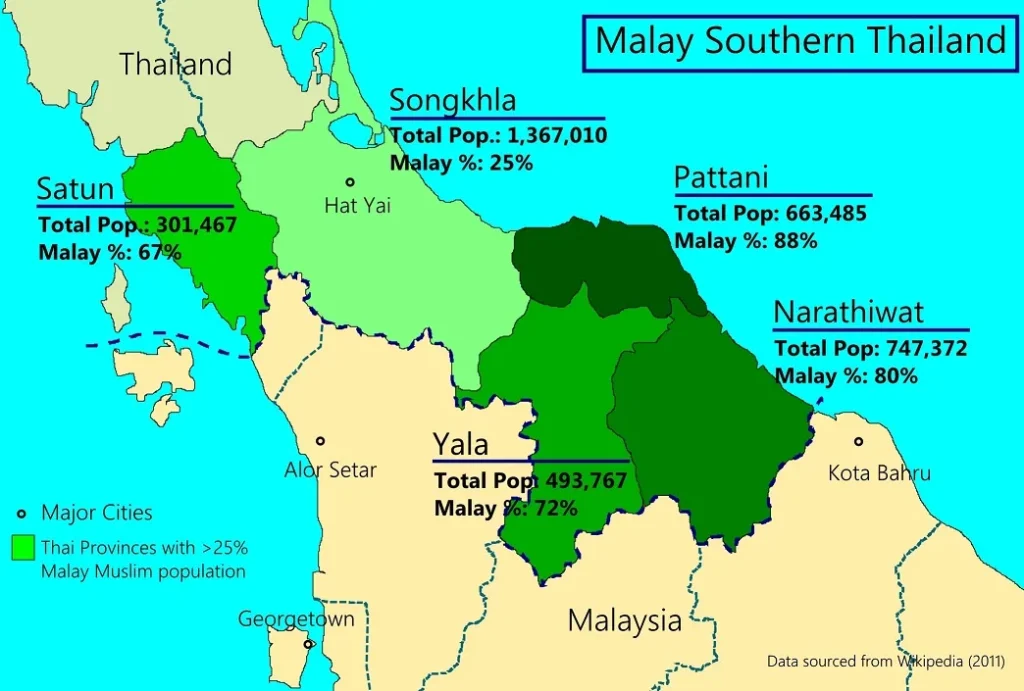
I’ve flown into Thailand about 80 times and, on one occasion, crossed into Thailand via Padang Besar land border, the one commonly used by foreigners. But this time, I was heading into one of the most volatile parts of Thailand—an area where both Thai and foreign governments warn against travel and where many travel insurance policies refuse coverage.
Thailand’s Deep South, often called the Southern Border Provinces consists of Narathiwat, Yala, Pattani, and parts of Songkhla. All of these provinces have been affected by a long-running insurgency. The conflict has led to instability, violence, and heightened security concerns, making this region one of the most volatile in Thailand. In September 2024, eight soldiers were injured in Pattani when a bomb went off, and on January 14, 2025, a bomb exploded, killing two local Police officers. In the past, Westerners have been kidnapped, though such incidents are rare. And now I was here trying to get in!
As I walked to the door for the private immigration interview, my agent spoke again, this time with a more humble tone. “It’s actually because I have never seen your sort of visa before. We never get them here! I don’t know how to process it.”
The silent and expressionless supervisor tapped into his computer, motioned for me to sit, and press my digits on a pad to be fingerprinted. The computer emitted the same reassuring beep I get when I enter Thailand via the airports. Staring intently at the message on the screen, he nodded solemnly and stamped my passport. He then showed it to me, pointing at the stamp showing a date six months away, before deferentially handing my passport back. Without another word, he gestured towards the exit. I thanked him, gathered my bag, was waved through customs and walked into Thailand.
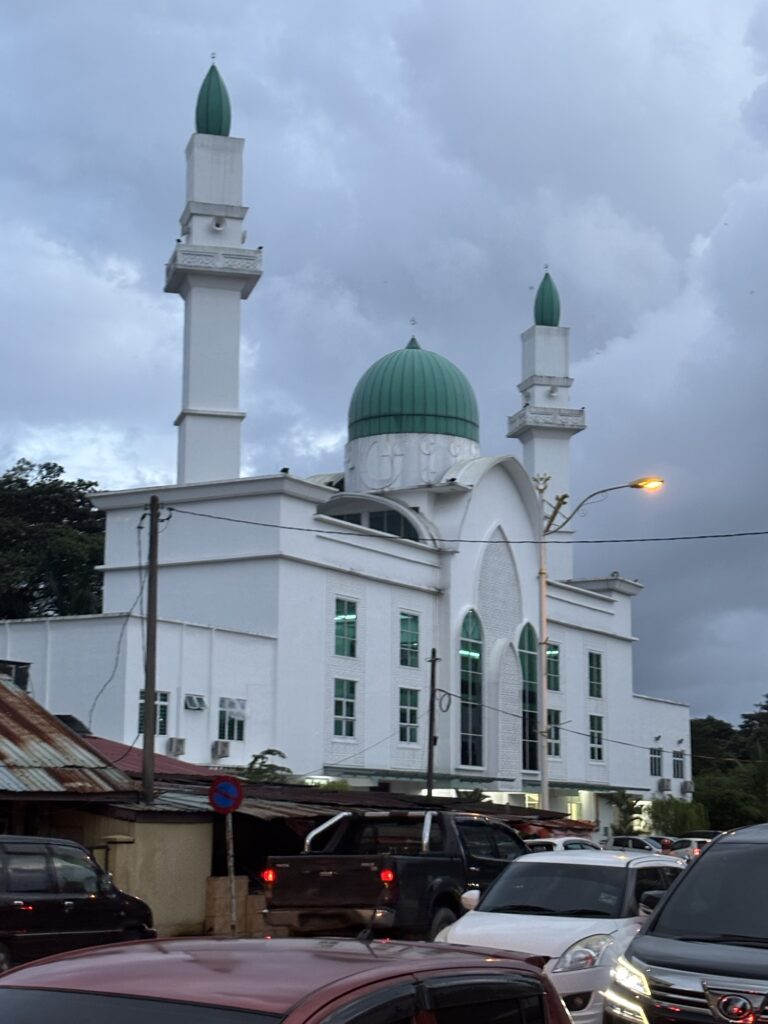
That morning, I woke up in Kota Bharu, unsure how the day would unfold. My journey would begin with a road trip from my lovely, friendly hotel in Kota Bharu to the Thai Malay border.

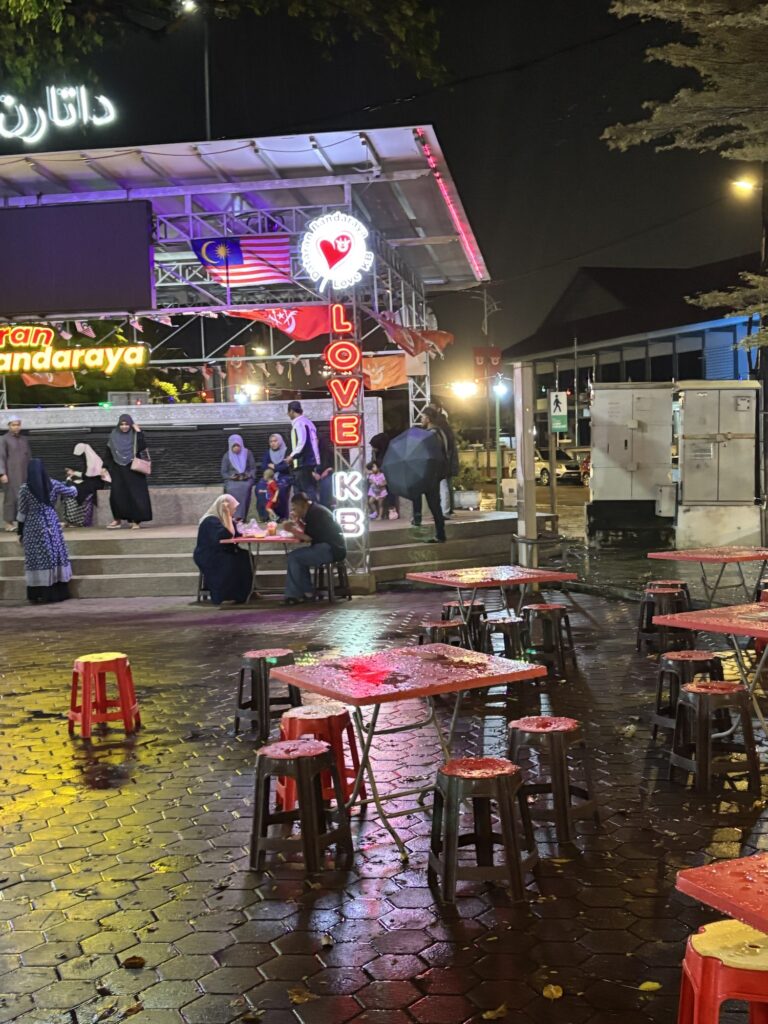
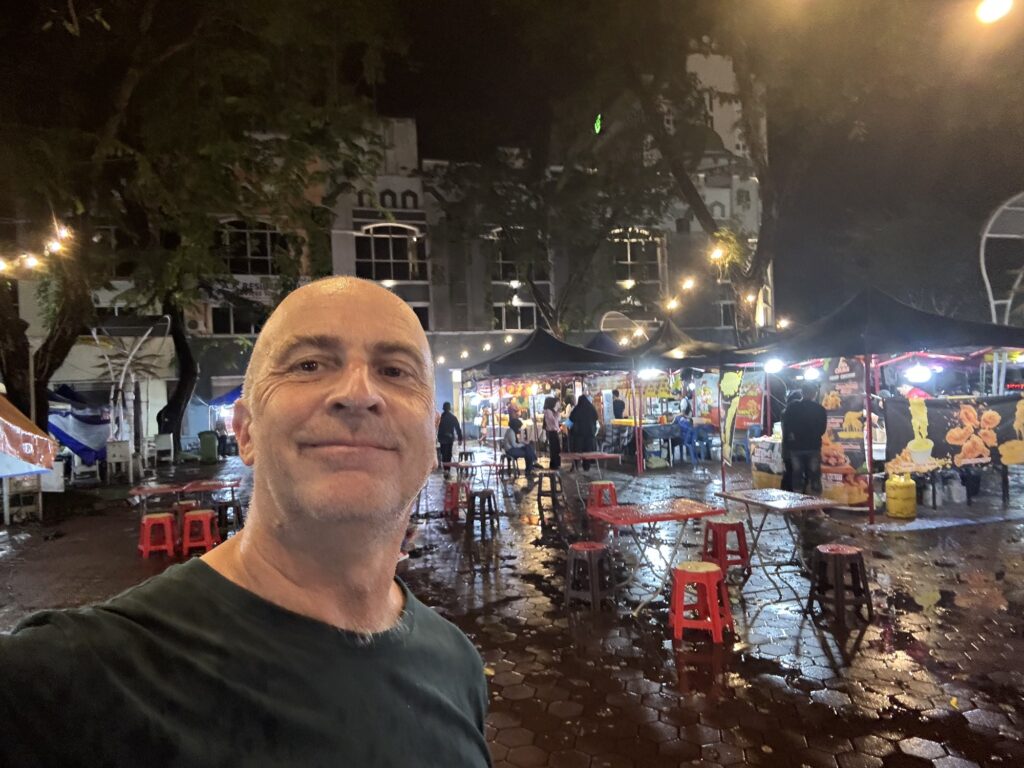
There is a bus service (Route 29) a few times a day from Kota Bharu Central Bus Station to the Malaysian border town of Rantau Panjang. It is operated by Mutiara Rentas Desa (MRD). The first service is at 645 to the border, and the last is at 1715h (515pm), and it takes just under two hours.
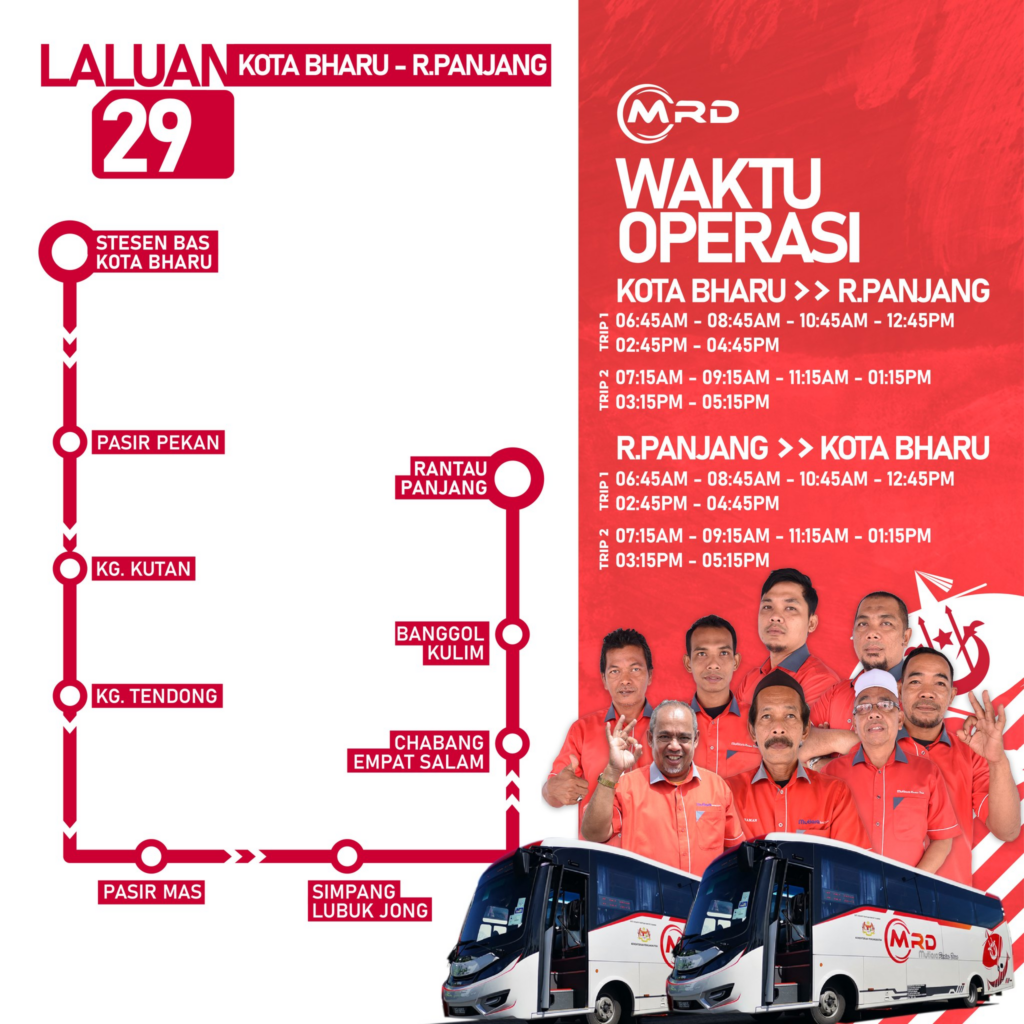
I opted to speed things up by taking a Grab car which took an hour and cost me 69RMB or 6USDplus tip. The 41 km drive to Rantau Panjang was scenic, with lush greenery lining the roads as I made my way north. As I approached the border area, the atmosphere seemed to change, with a noticeable increase in traffic as I neared the crossing point.
Close to the border, we passed an immigration detention centre. “Mmm,” I thought. “I wonder if I’ll end up there?” Or, deep down, I wondered something else: “Could something worse happen? Am I doing the right thing by coming here?” I still don’t know the answer to that. What do you think brave or foolhardy? The main danger here is being in the wrong place at the wrong time. Most attacks target local security forces, but I could still be affected accidentally as a foreigner.
Hopping out of the car and thanking my driver, I followed the clear signposting to the Malaysian immigration checkpoint (photography forbidden). I was surrounded by people walking and driving across the border. There is a clearly marked pedestrian path next to the roads. Trucks, motorbikes, and various other vehicles clogged the crossing, moving in both directions. This border was heavily trafficked, primarily by locals, many with family on both sides, making it a routine passage. Unlike the Thai-Laotian and Cambodian borders, vehicles don’t change sides of the road, as both Thailand and Malaysia drive on the left side of the road. Malaysia because of the British colonisation and Thailand adopted it because of the trade with Malaysia and Singapore and Burma/Myanmar.
The Sungai Kolok border used to be quite porous, with many informal crossings. People from both Thailand and Malaysia, particularly Malaysians, could cross relatively easily. However, Malaysia has recently tightened its regulations around border crossings.

After clearing Malaysian immigration, I followed the crowd down to the bridge. Motorcycles transport people across for a fee, but I figured the 900 meters were walkable, especially since it wasn’t raining.
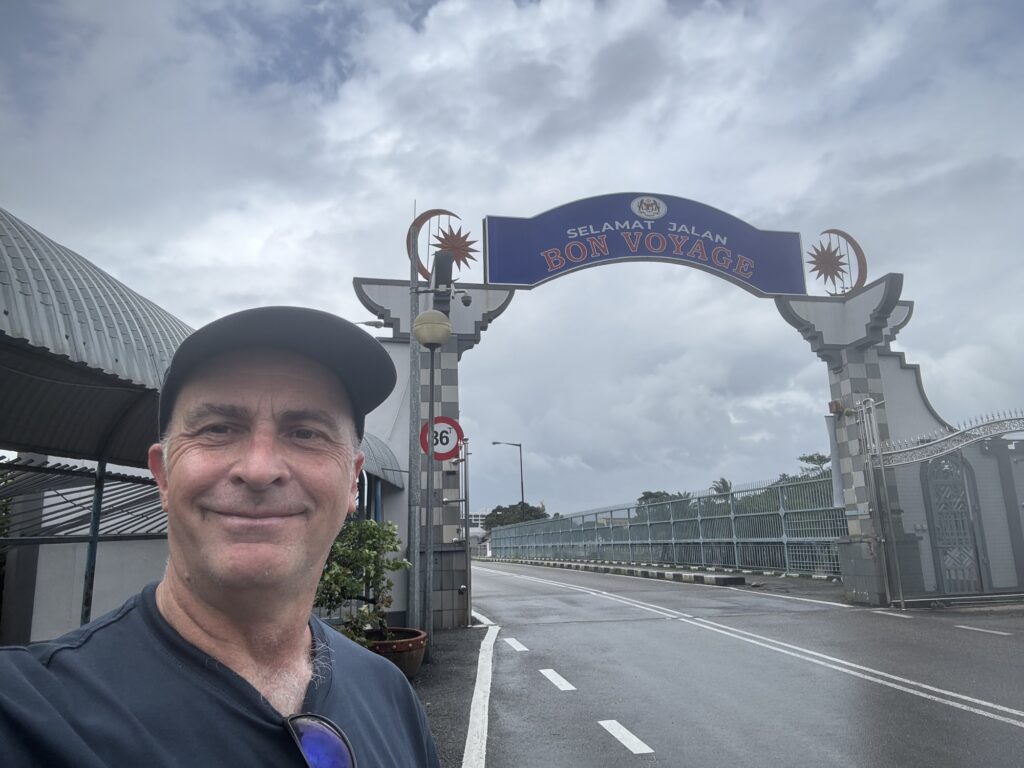
The bridge itself was a simple structure but quite symbolic. As I walked towards it, I could feel the shift in atmosphere.
One side of the bridge was distinctly Malaysian, with signs in Malay and the other Thai.
There is a faded marker in the middle of the bridge.
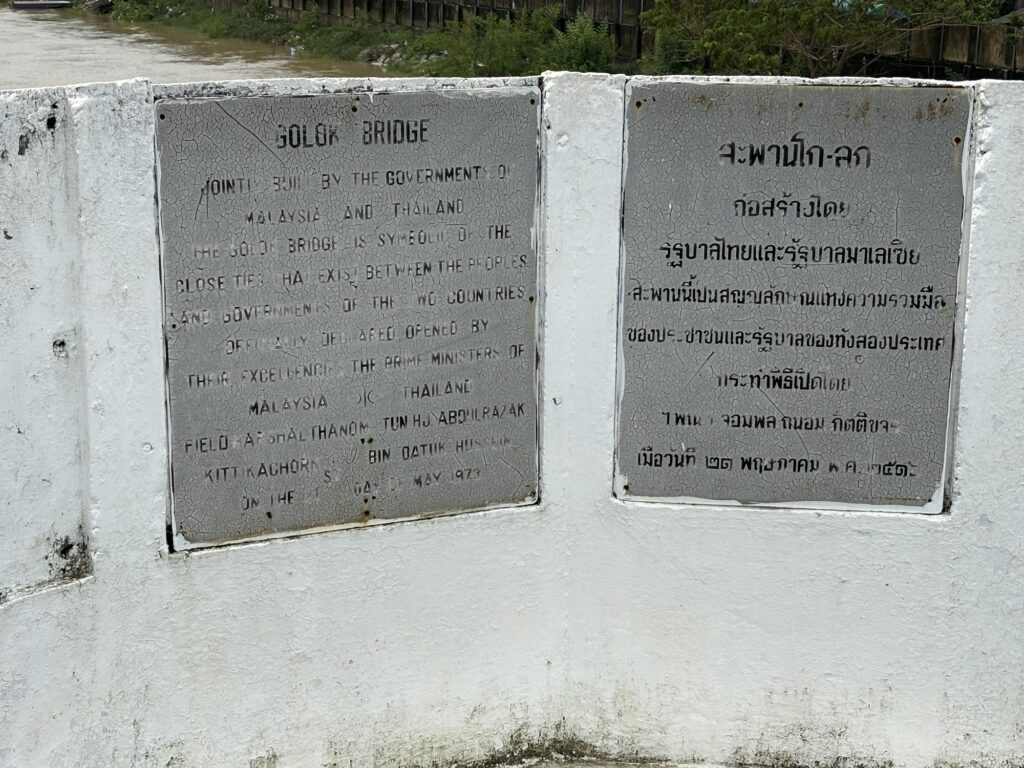
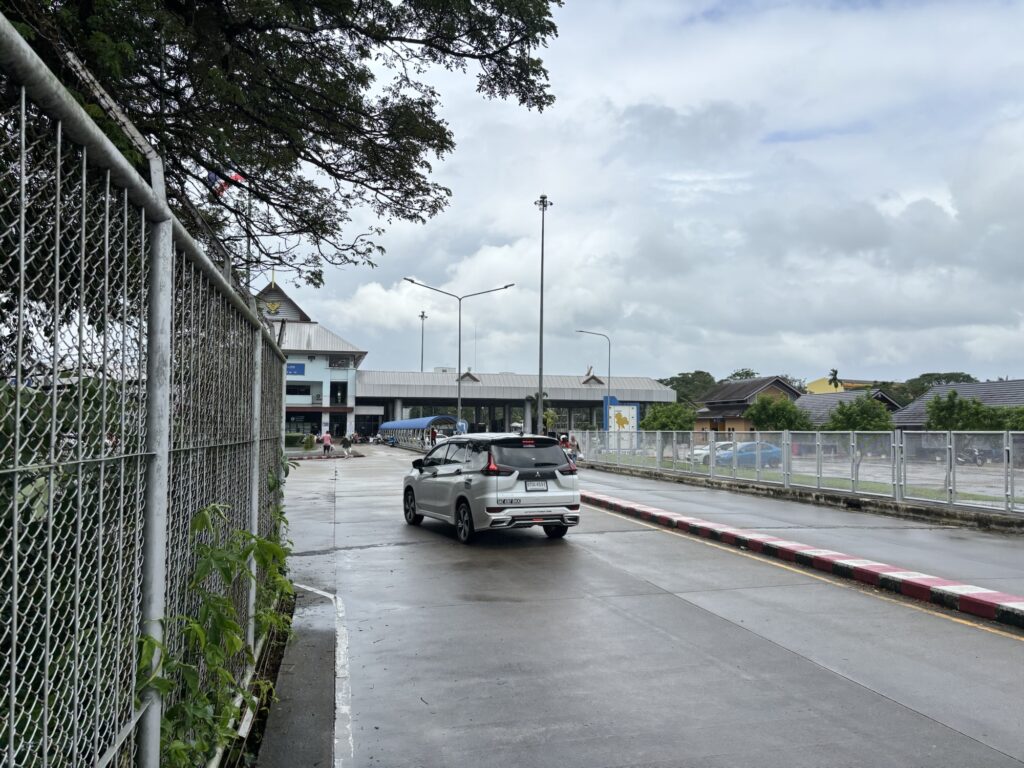
Stepping onto the bridge, I was leaving Malaysia behind, and the experience felt surreal. The border was clearly marked, with flags fluttering on either side. The sight of the flowing river below added to the moment’s gravity. I found the view on both sides fascinating.
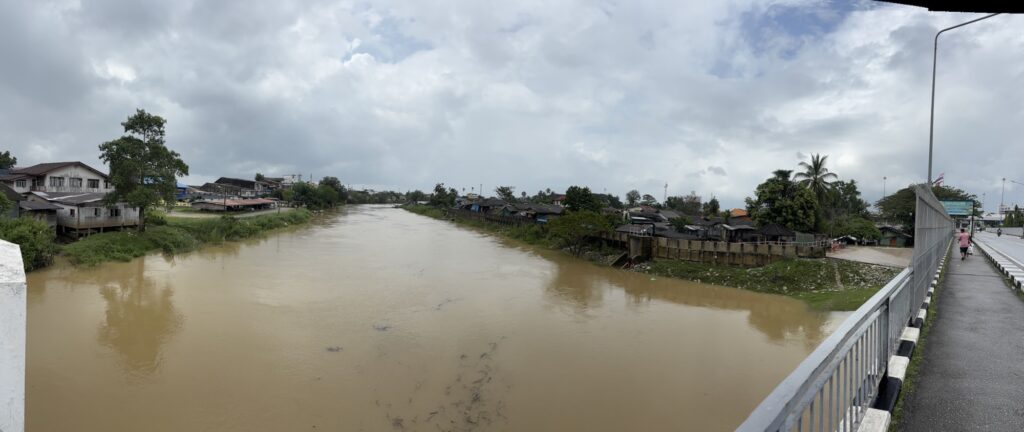
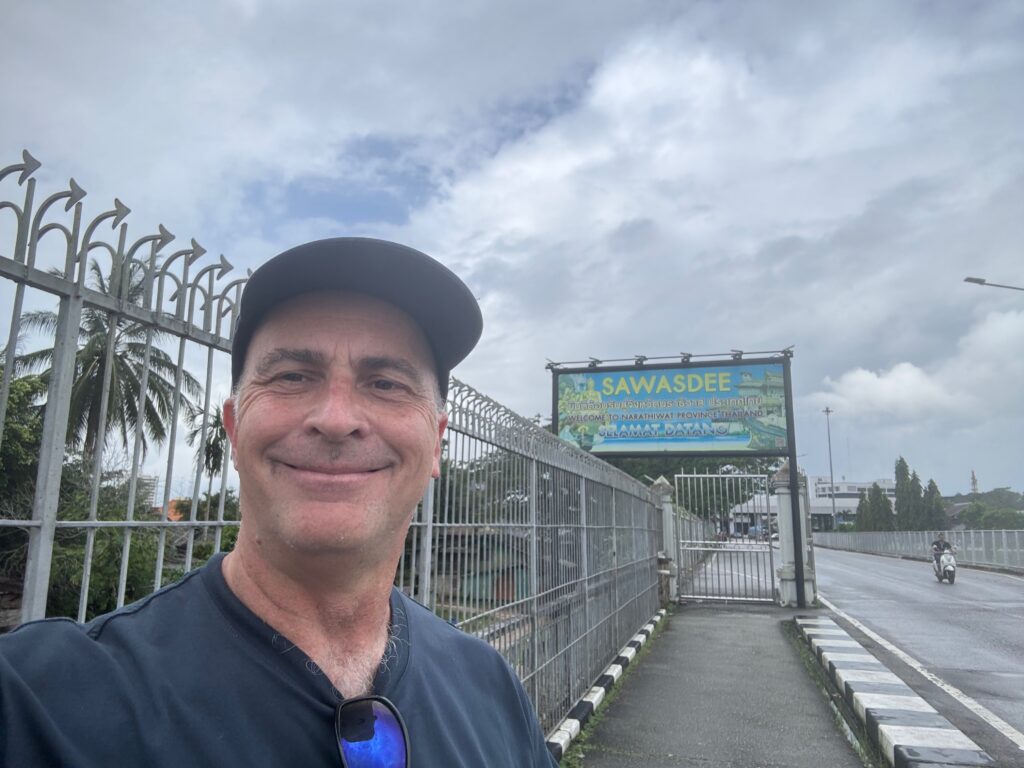
There seemed to be no rules for people walking across. Many paused to take selfies, so I joined them.
In many countries—for example, on the Thai-Cambodian border, which I have crossed twice when leaving Thailand—it is forbidden to take photos in “no-man’s land.”
I was also particularly interested in the railway bridge that still stands. I mentioned in my Jungle Railway review that trains used to run from Tumpat in Malaysia east across the railway to Sungai Golok on the Thai side. They haven’t operated since 1975, but the tracks still appear in working order.
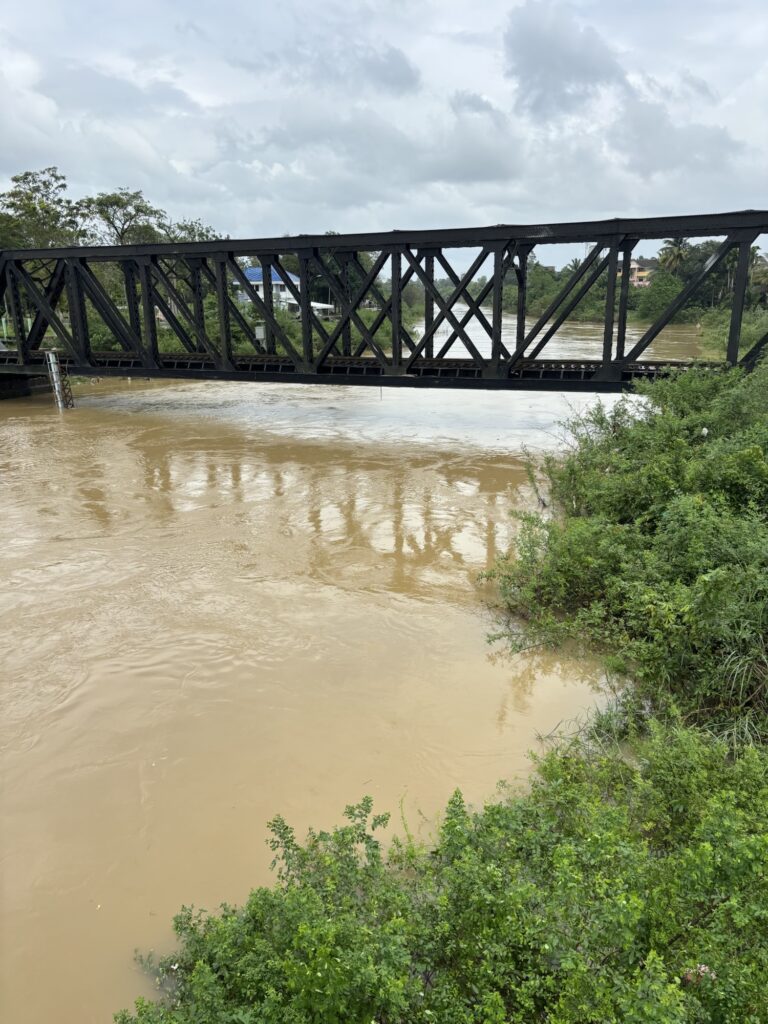
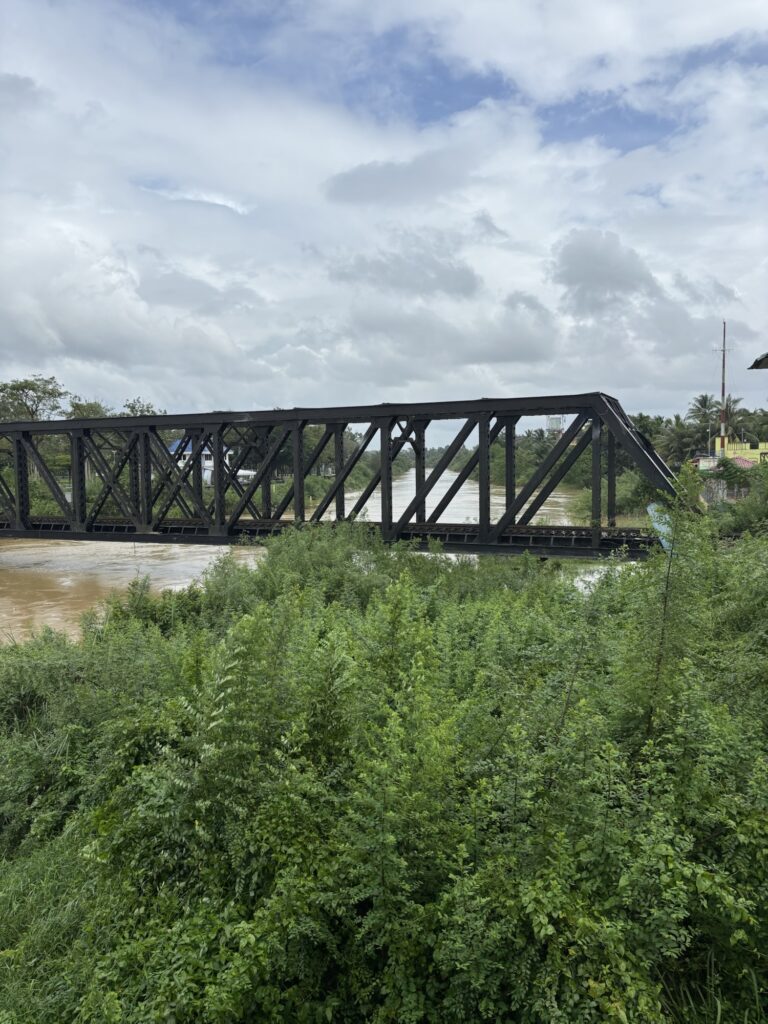
Uncannily, at some point on the bridge, my mobile phone shifted one hour back to Thailand time. I did not spot exactly where the change occurred, but the time went from 1253pm to 1154am as I seamlessly shifted phone carriers!!
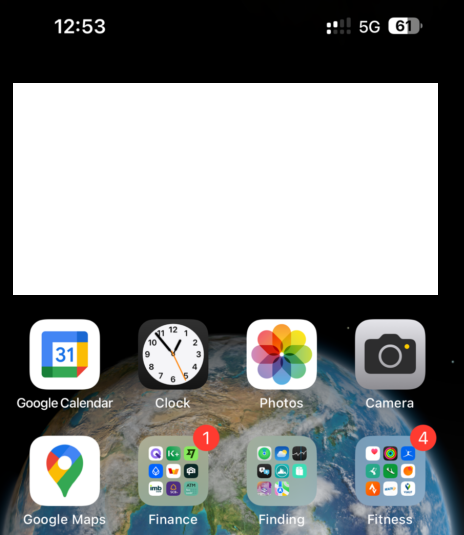
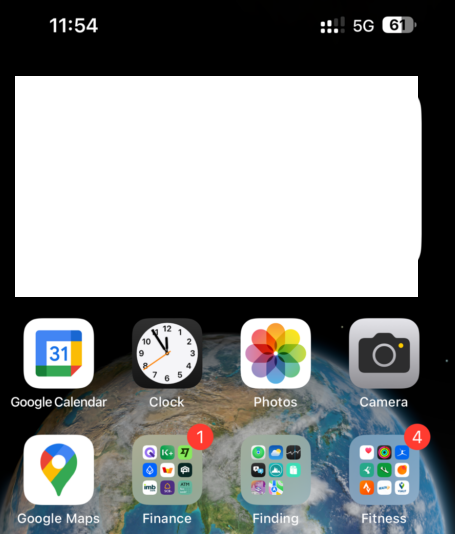
After clearing the border, I walked another 90 metres to the Sungai Kolok Railway Station. The road had a fairly steady flow of traffic, and passing motorbike taxis encouraged me to ride with them.
The old railway Sungai Kolok-Tumpat railway line was visible and looked to be in good condition.
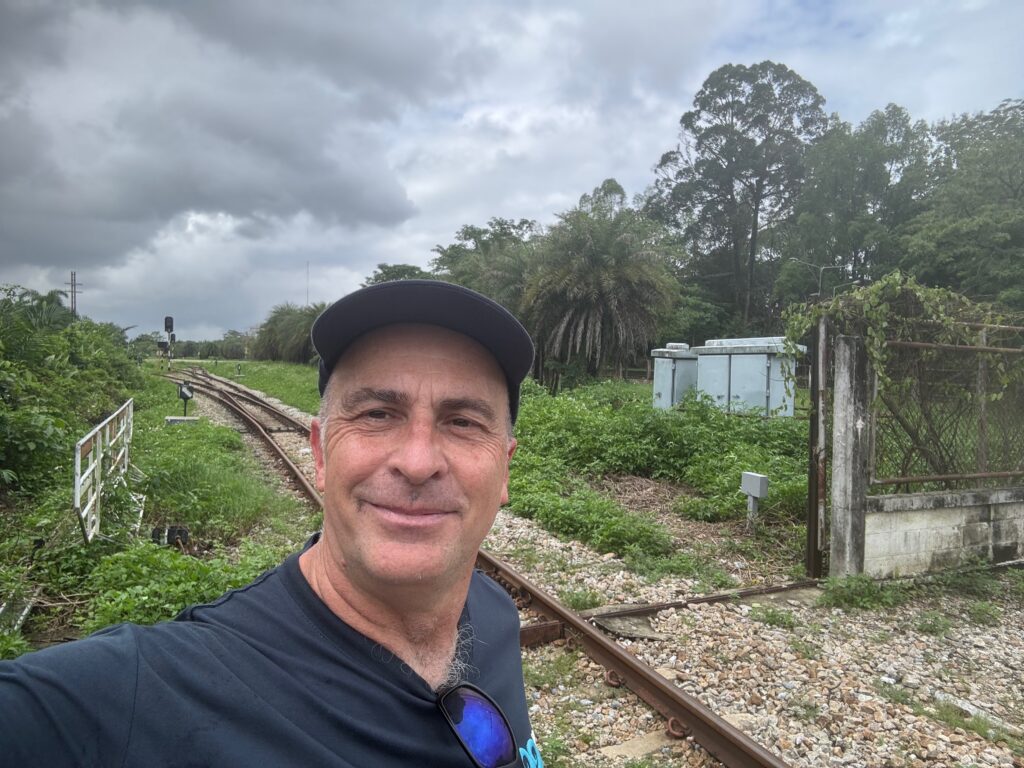
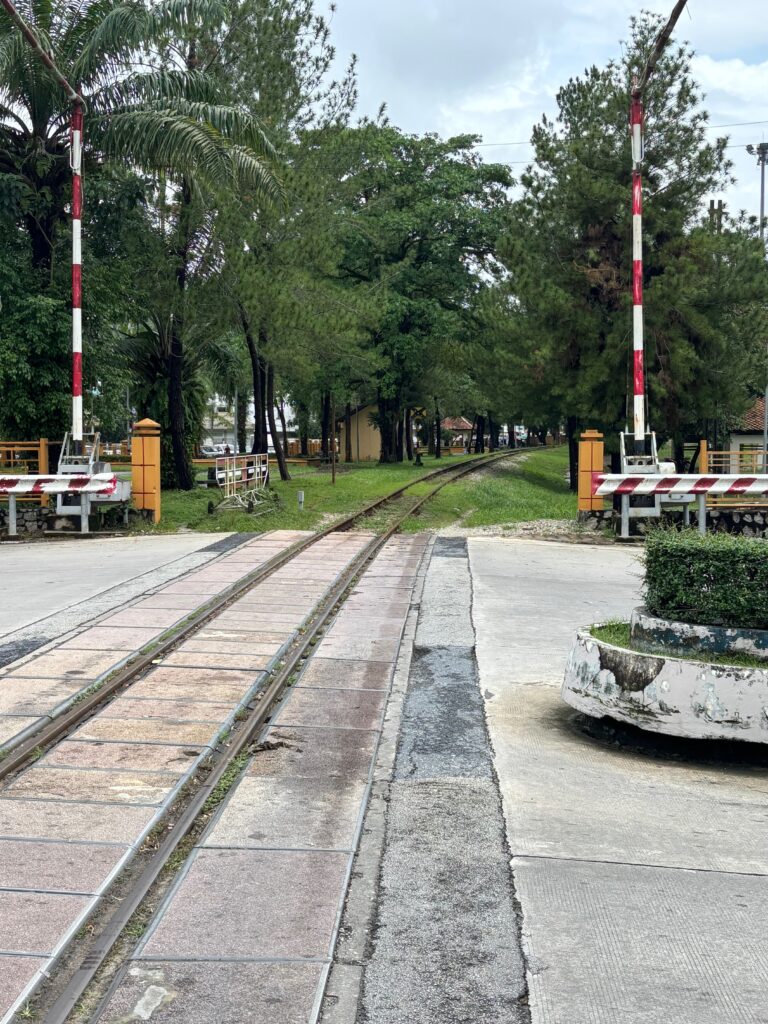
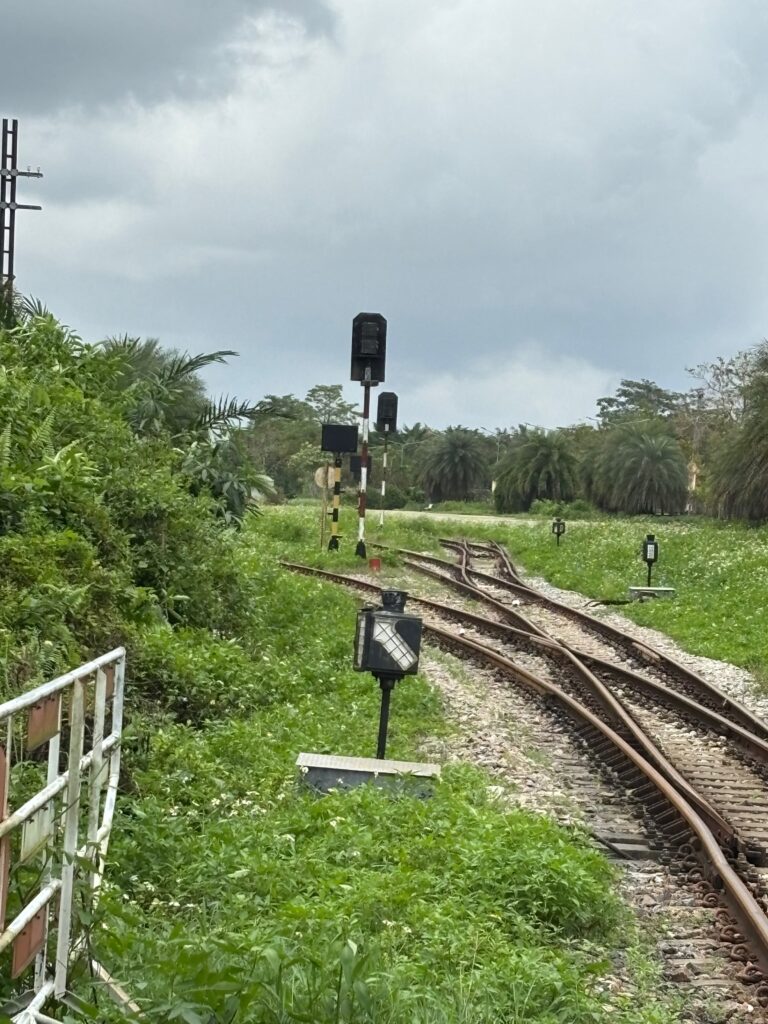
Just before the station, there was an old train on display.
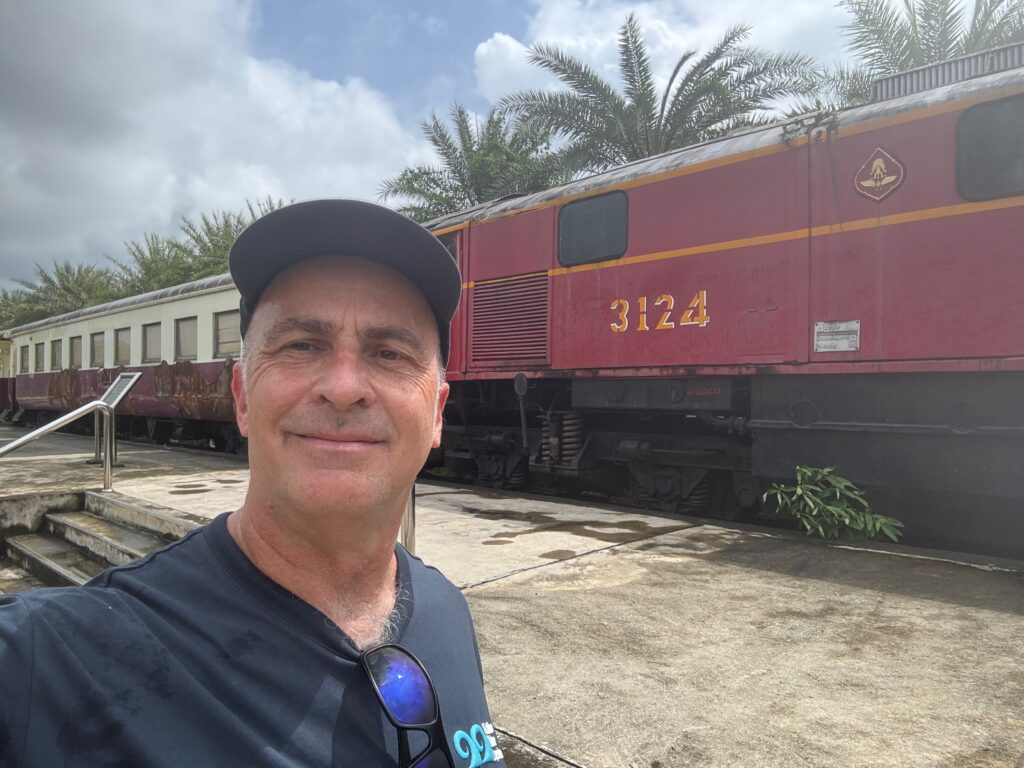
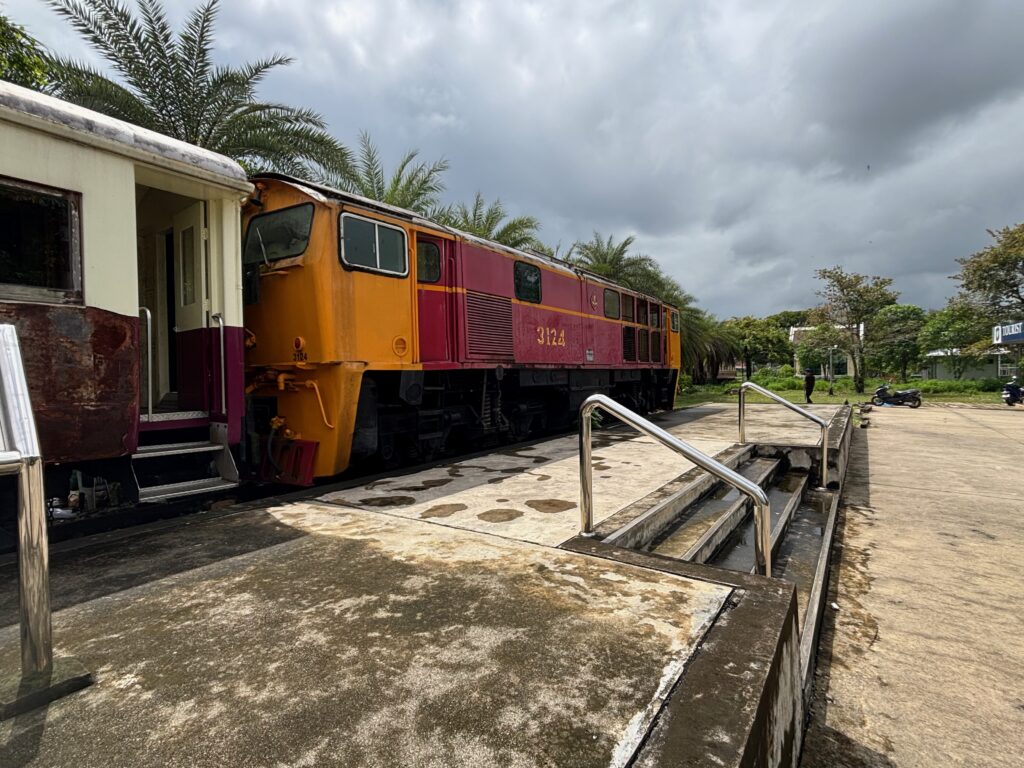
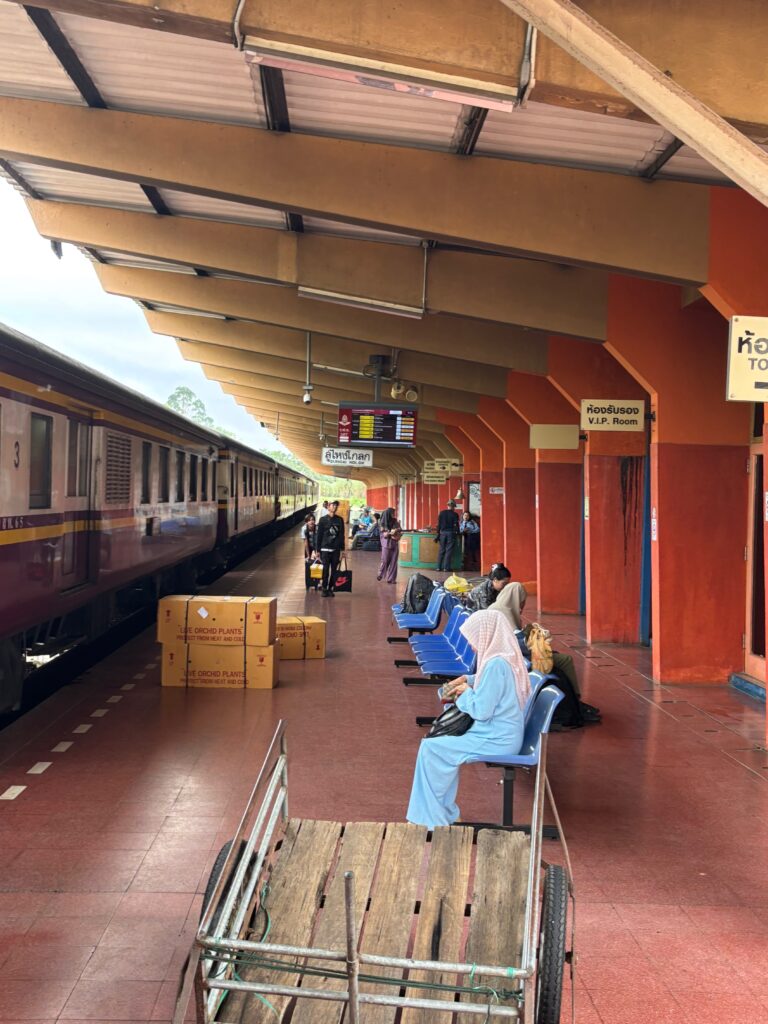
I left the old station courtyard and passed an older woman walking away from the koan station. She stared at this foreigner with disbelief! I asked her in Thai if I was going the right way to buy a ticket at the station. She recovered quickly and pointed the way. This was to be my experience continually for two days. From when I left Kota Bharu to when I arrived in Hat Yai—350 km and two days later—I saw no other foreigners. I was an object of fascination.
People openly stared at me, and many engaged me in conversation, curious to know why I was travelling through this part of Thailand!
Sungai Kolok station was very busy and felt like any other busy railway hub in with passengers waiting vendors selling snacks, and announcements about the trains arriving and departing. I quickly bought my ticket and boarded the very full train. Report on that next Tuesday.
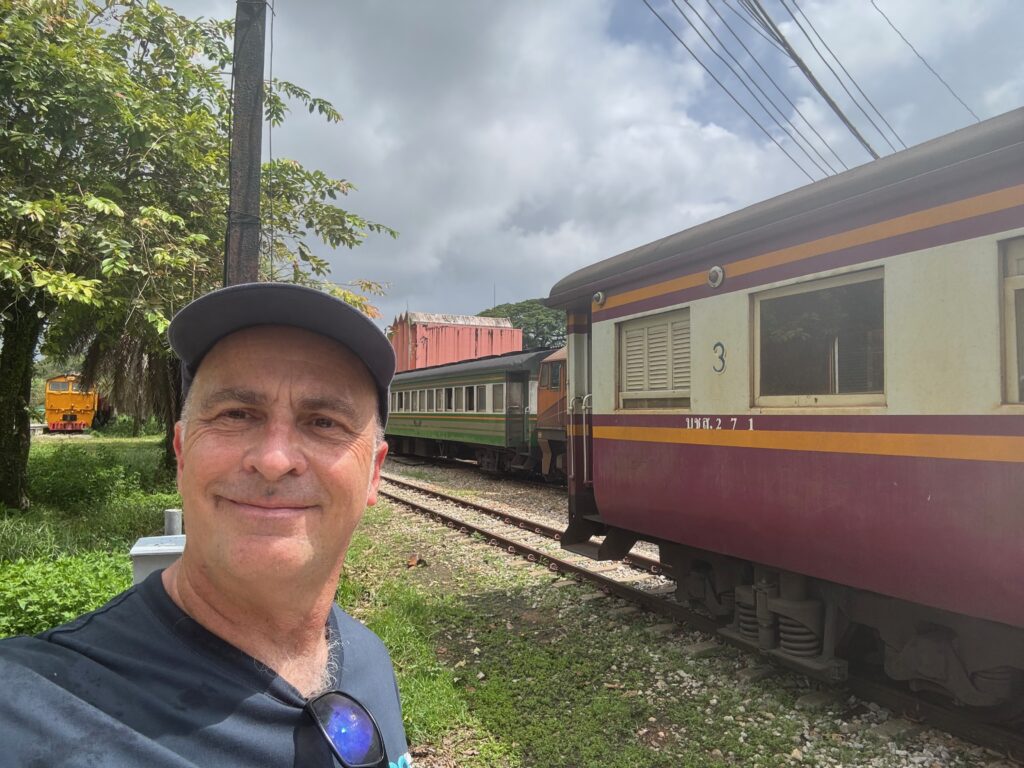
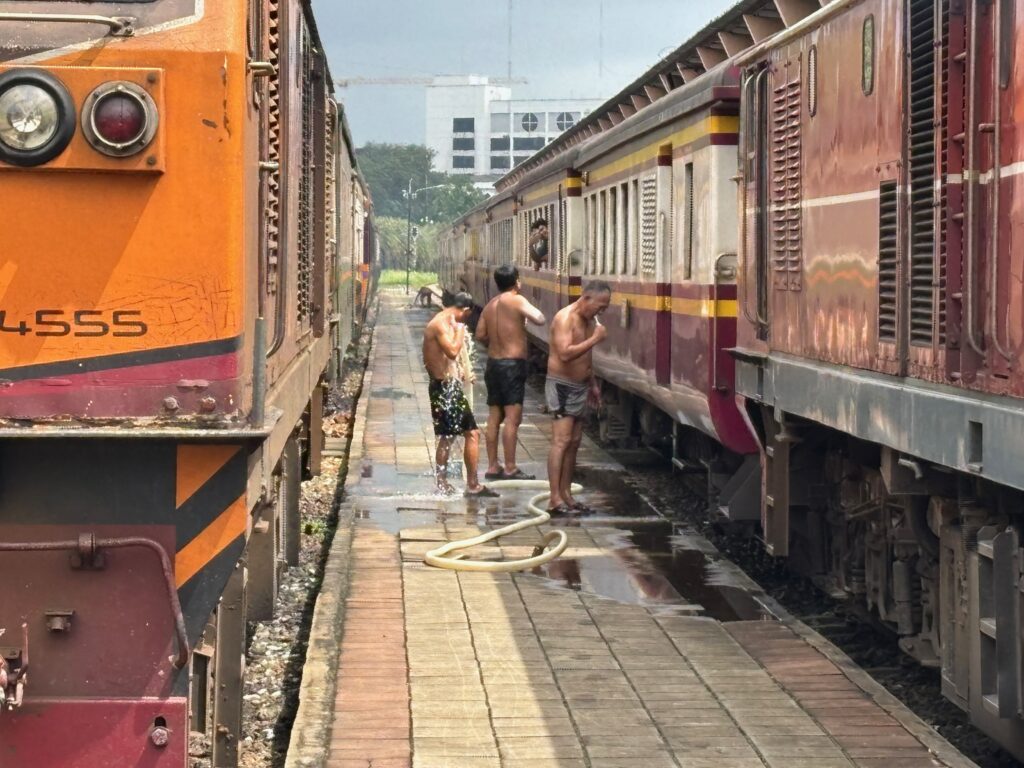
Crossing the border from Malaysia into Thailand at Sungai Kolok was a surprisingly smooth experience. Despite its reputation as a tense region, the process felt routine, with immigration officers processing most travellers efficiently. Stepping into Thailand’s Deep South, I was struck by how normal everything felt, yet the presence of checkpoints reminded me of the region’s complexities.
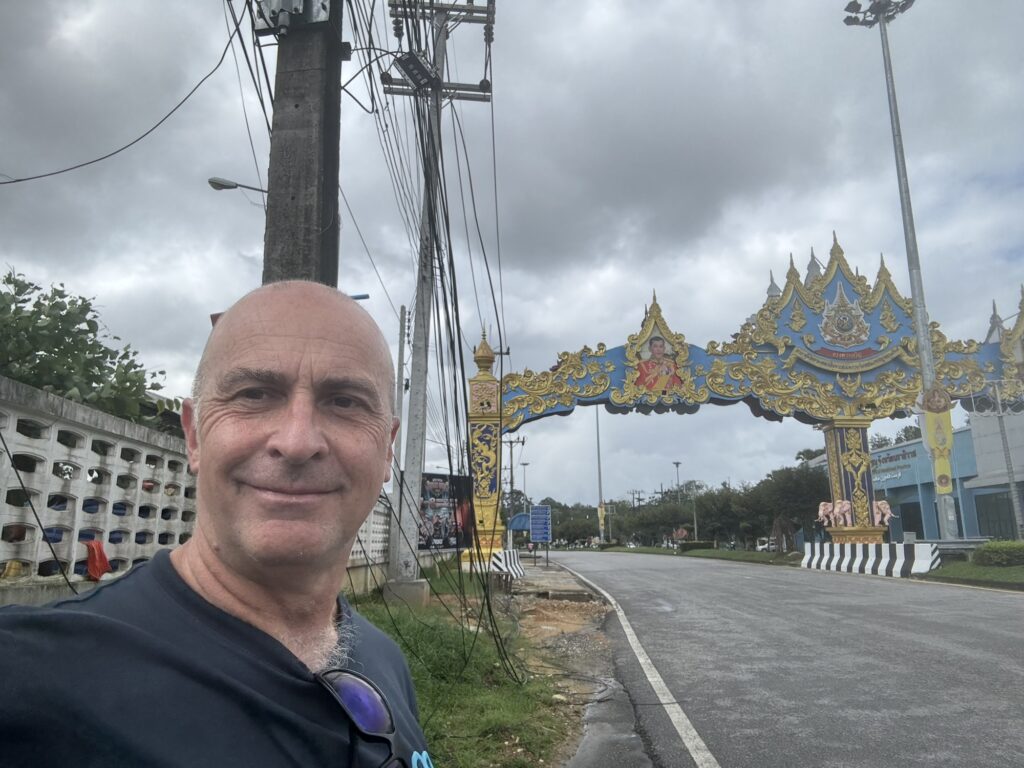
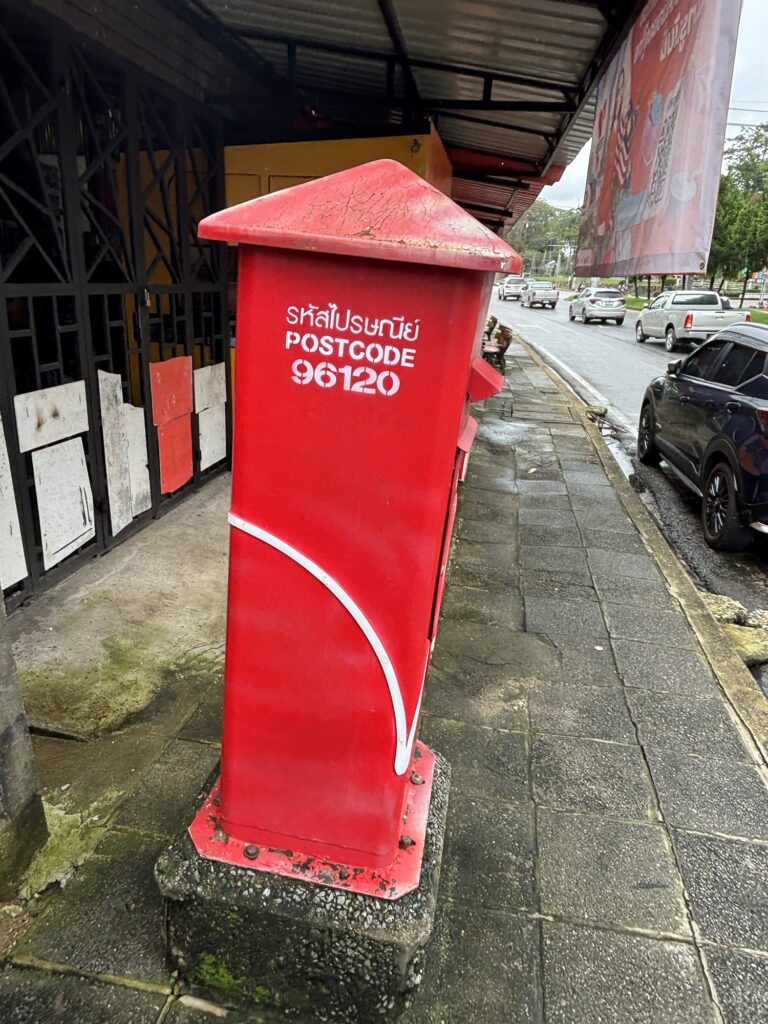
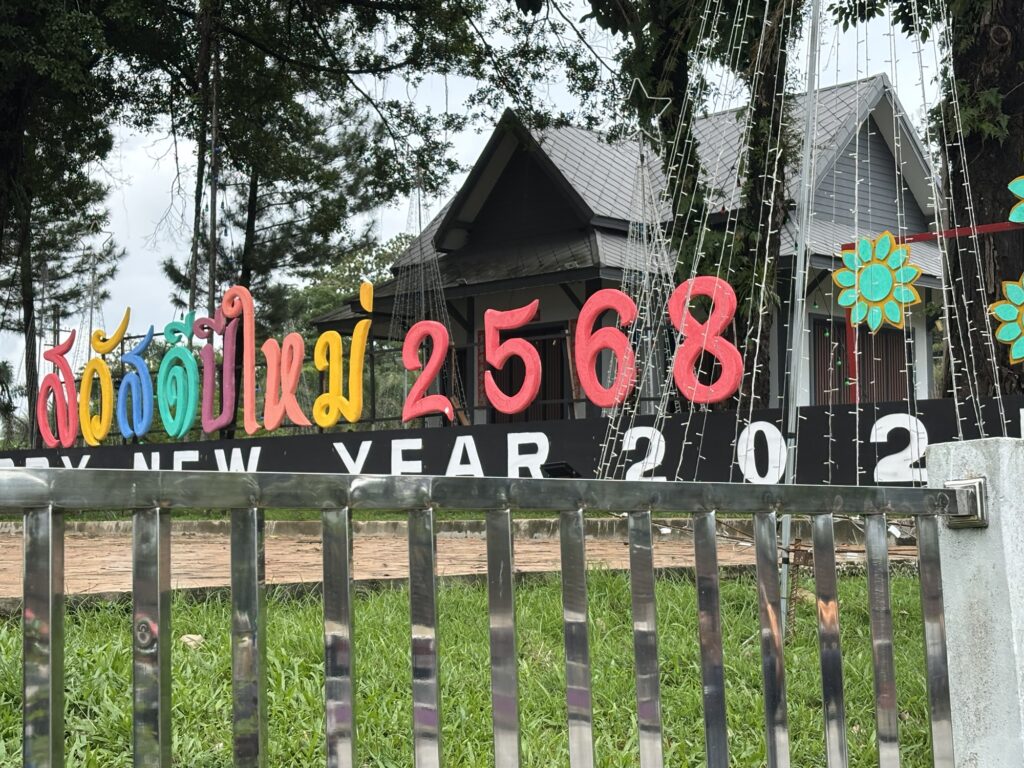
When I reached the station, I felt a sense of accomplishment—having entered a new country and completed a journey that few travellers get to experience.
My experience in the south b was that the people I encountered were some of the friendliest I’ve met in Thailand. They were incredibly concerned and helpful. One man did tell me to leave, but he was an outlier. Most ordinary people were okay, and their warmth made me rethink my perception of the region. It was a place where danger existed, but so did kindness.
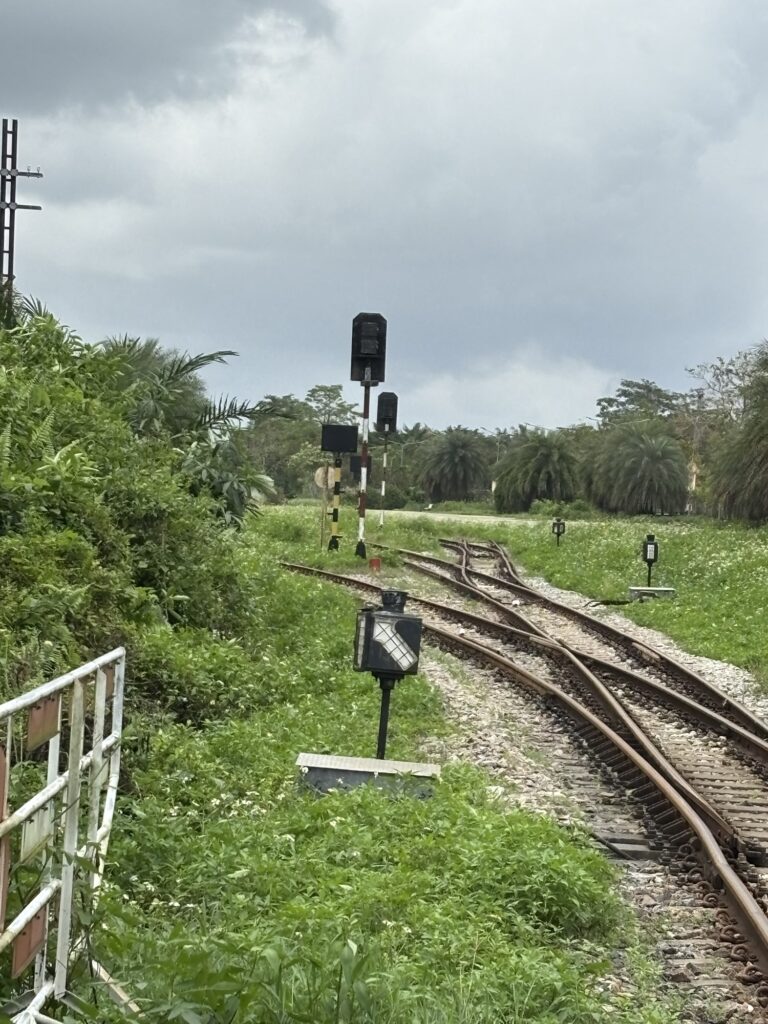
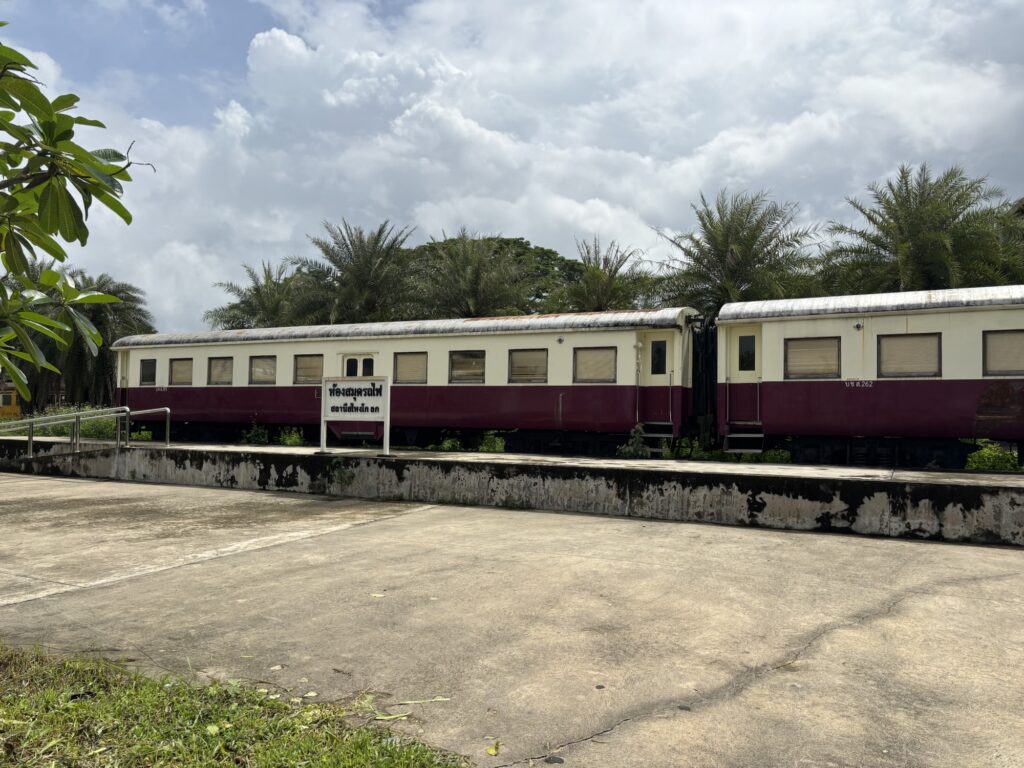
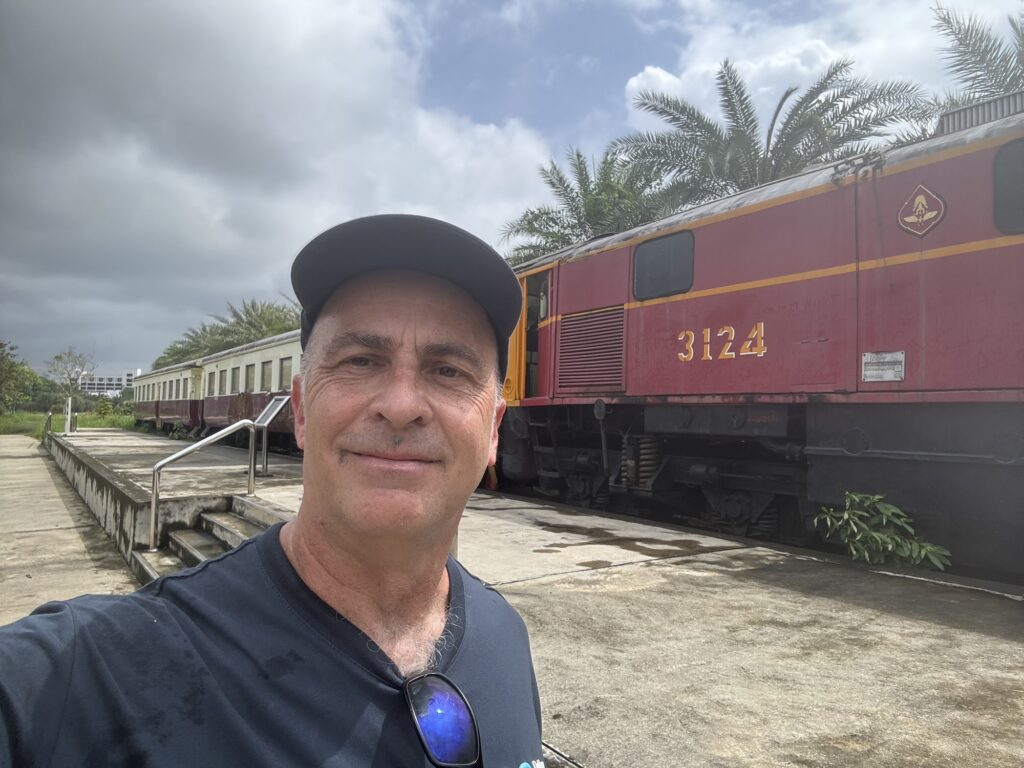
I can’t help but reflect on how few places in the world I’ve actually walked across a border. One of the first was from Germany into France, but these days, you wouldn’t even notice the difference. I also walked into Vatican City from Rome, and although I didn’t walk into Liechtenstein, I took a bus there. I did take the train into Luxembourg and walked across the Victoria Falls Bridge from Zimbabwe to Zambia. Additionally, I’ve walked from Canada to the U.S. and back at Niagara Falls. And, of course, I’ve crossed the boundary between Israel and Palestine on foot. It’s not often that one gets to walk across international boundaries, and these crossings stand out as unique travel experiences for me.
Related Posts
- Malaysia’s Jungle Railway: From the Heart of the Country to the Sea
- How to get around: Exploring Malaysian and Kuala Lumpur Transport Networks
- Being Captured by Captivating Krabi: Thailand’s Cultural and Natural Paradise
- Flying Batik Air for the First Time: What You Need to Know
- Stingray attack -a reminder of the need for Travel Insurance

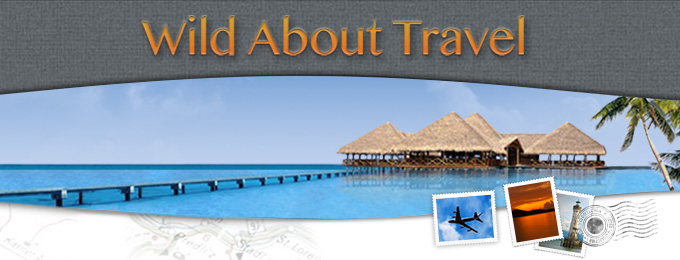
really enjoyed your blog, i only did walked from malaysia into singapore hahaha!
Very informative, especially for all those curious about crossing the border from KB into Thailand.
Good write up Martin! I am from Singapore and did that crossing on foot a few years ago too as my son I were taking trains from Laos to Singapore.
Other times we also crossed at the tiny ferry at Pengkalan Kubor nearby in Tumpat, and by train Padang Besar. This week I am on a motorbike trip and crossed into Thailand at Wang Kelian and going back to Malaysia at Sungai Kolok. These land points are indeed fascinating blends.
Just wondering, why are you paying in RMB while in Malaysia?
I had an experience at the land border between Cambodia and Vietnam too. Mainly locals and it’s really interesting how things work there as compared to an international airport
I walked last year from Armenia to Georgia, many times from Austria to communist Hungary and Yugoslavia and many times to the Czech republic, even often illegally in the 90 ties, maybe I will go to Malaysia and Thailand in June